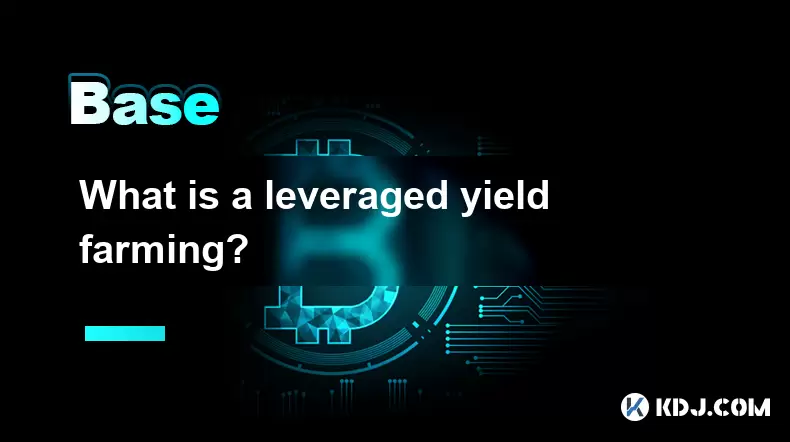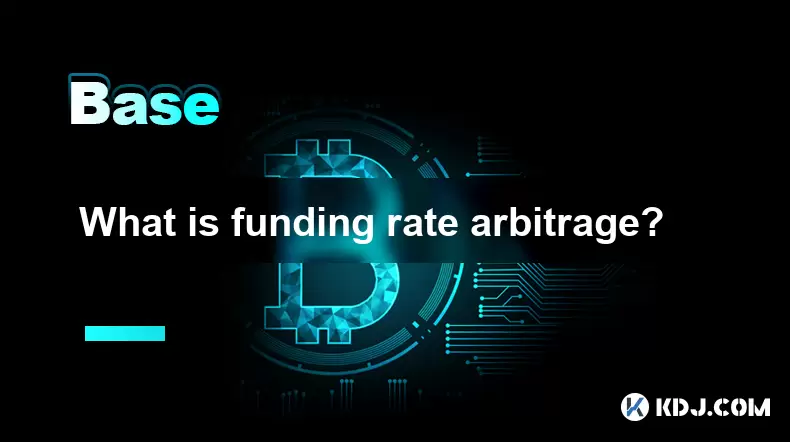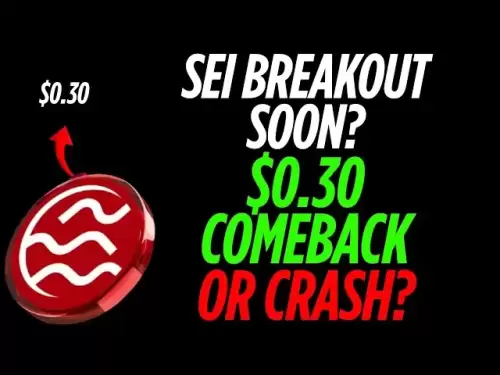-
 Bitcoin
Bitcoin $109,583.2239
0.19% -
 Ethereum
Ethereum $2,583.4612
0.48% -
 Tether USDt
Tether USDt $1.0003
-0.04% -
 XRP
XRP $2.2681
0.70% -
 BNB
BNB $659.9218
-0.52% -
 Solana
Solana $151.4961
-0.37% -
 USDC
USDC $0.9999
-0.02% -
 TRON
TRON $0.2861
1.20% -
 Dogecoin
Dogecoin $0.1718
0.04% -
 Cardano
Cardano $0.5960
-0.07% -
 Hyperliquid
Hyperliquid $40.1233
2.85% -
 Sui
Sui $2.9974
2.48% -
 Bitcoin Cash
Bitcoin Cash $497.1279
-1.76% -
 Chainlink
Chainlink $13.7275
-0.22% -
 UNUS SED LEO
UNUS SED LEO $9.0241
0.70% -
 Avalanche
Avalanche $18.5536
-0.88% -
 Stellar
Stellar $0.2421
1.39% -
 Toncoin
Toncoin $2.8593
-0.51% -
 Shiba Inu
Shiba Inu $0.0...01187
-0.07% -
 Litecoin
Litecoin $90.0023
2.90% -
 Hedera
Hedera $0.1590
2.79% -
 Monero
Monero $322.1495
0.00% -
 Polkadot
Polkadot $3.5453
-1.00% -
 Dai
Dai $1.0000
-0.01% -
 Bitget Token
Bitget Token $4.5733
-1.06% -
 Ethena USDe
Ethena USDe $1.0002
-0.01% -
 Uniswap
Uniswap $7.6345
3.03% -
 Aave
Aave $279.2583
0.47% -
 Pepe
Pepe $0.0...01003
-1.52% -
 Pi
Pi $0.4941
-0.32%
What is a block explorer API?
A block explorer API enables developers to access and interact with blockchain data, such as transactions, balances, and smart contracts, through structured endpoints.
Jul 04, 2025 at 05:07 am

Understanding the Role of a Block Explorer API
A block explorer API is a crucial interface that enables developers and users to interact programmatically with blockchain data. Unlike traditional APIs used in web services, a block explorer API specifically provides access to blockchain-related information such as transaction details, wallet balances, block confirmations, and smart contract interactions. These APIs serve as bridges between blockchain networks and external applications, allowing for real-time querying and analysis.
One of the key functions of a block explorer API is to retrieve and display on-chain data in a structured format, typically JSON or XML. This allows developers to build tools, dashboards, and monitoring systems without needing to run a full node or parse raw blockchain data manually.
How Does a Block Explorer API Work?
The operation of a block explorer API revolves around exposing endpoints that correspond to specific blockchain queries. When a request is made to an API endpoint—such as fetching a transaction by hash or checking the balance of a wallet address—the API interacts with the underlying blockchain network or database to fetch and return the requested data.
- The user or application sends an HTTP request (GET or POST) to a specific API endpoint.
- The API processes this request and communicates with the blockchain node or database.
- It retrieves the relevant data and formats it into a consumable structure like JSON.
- The response is sent back to the requesting entity.
These steps ensure seamless interaction with blockchain data, enabling automation and integration into third-party platforms.
Common Use Cases for Block Explorer APIs
Developers leverage block explorer APIs for a wide range of applications. One of the most common use cases is integrating blockchain data into wallets and exchanges to provide real-time transaction tracking and balance updates.
- Monitoring incoming and outgoing transactions for a given address
- Validating transaction confirmations and status
- Analyzing blockchain trends through historical data retrieval
- Building custom dashboards for blockchain analytics
In addition, these APIs are essential for decentralized finance (DeFi) platforms and non-fungible token (NFT) marketplaces, where transparency and traceability are critical for user trust and system functionality.
Key Features of a Reliable Block Explorer API
When evaluating a block explorer API, certain features distinguish high-quality services from basic ones. A robust API should offer comprehensive data coverage, low latency responses, and strong rate limits management to prevent abuse.
- Support for multiple blockchain protocols (e.g., Ethereum, Bitcoin, Binance Smart Chain)
- Detailed documentation with example requests and responses
- Rate limiting and authentication mechanisms (like API keys)
- Webhook support for event-driven notifications (e.g., new transaction alerts)
These features ensure that developers can rely on consistent and accurate data while building scalable blockchain-based applications.
Popular Block Explorer APIs in the Market
Several well-established block explorer APIs exist today, each catering to different blockchain ecosystems. Etherscan, for instance, offers a powerful API for Ethereum-based queries, including contract interactions and token transfers.
Other notable providers include:
- Blockchair: Supports multiple chains like Bitcoin, Ethereum, and Litecoin.
- Blockstream.info: Offers a lightweight but reliable API for Bitcoin.
- BscScan: Tailored for Binance Smart Chain, providing detailed chain analytics.
- AlgoExplorer: Focused on the Algorand blockchain.
Each of these APIs has its own set of endpoints, query parameters, and response structures, so choosing the right one depends on the target blockchain and required functionality.
How to Use a Block Explorer API: A Step-by-Step Guide
To get started with a block explorer API, you first need to obtain an API key if the service requires authentication. Once you have access, follow these steps:
- Identify the desired endpoint based on the type of data you want to retrieve.
- Construct the API URL using the provided base URL and append any necessary query parameters.
- Send the request via a tool like Postman or directly from your application code using HTTP client libraries.
- Parse the returned JSON or XML response to extract the relevant data.
- Implement error handling for failed requests or unexpected data formats.
For example, using Etherscan’s API to check the balance of an Ethereum address involves making a GET request to a specific endpoint with the address and API key as parameters.
Frequently Asked Questions (FAQ)
Q1: Can I use a block explorer API without an API key?
Some block explorer APIs allow limited usage without an API key, but most require one for higher rate limits and access to advanced features.
Q2: Are block explorer APIs free to use?
Many offer a free tier with restricted access, while premium plans provide enhanced performance, increased request limits, and priority support.
Q3: How do I handle rate limits when using a block explorer API?
You can manage rate limits by implementing throttling logic in your code, caching frequently accessed data, or upgrading to a paid plan with higher quotas.
Q4: Is it possible to build my own block explorer API?
Yes, by running a full node and developing a custom API layer, you can create a private block explorer API tailored to your needs, though it requires significant technical expertise and resources.
Disclaimer:info@kdj.com
The information provided is not trading advice. kdj.com does not assume any responsibility for any investments made based on the information provided in this article. Cryptocurrencies are highly volatile and it is highly recommended that you invest with caution after thorough research!
If you believe that the content used on this website infringes your copyright, please contact us immediately (info@kdj.com) and we will delete it promptly.
- BONK Price Prediction: Meme Coin Mania and What's Next?
- 2025-07-04 12:30:13
- NYAG, Stablecoins, and FDIC Protections: Navigating the Regulatory Maze
- 2025-07-04 13:10:15
- Level Up Your DeFi Game: Phantom Wallet and the Ultimate DeFi Experience
- 2025-07-04 13:10:15
- Bitcoin Surge: Breaking Down the $109,000 Barrier and the Road to $165,000?
- 2025-07-04 12:30:13
- Solana ETF Inflows & Snorter Token: A New Era for Meme Coin Trading?
- 2025-07-04 12:50:12
- Ripple, Stablecoin, and First Bank: Decoding the Latest Moves in Crypto
- 2025-07-04 12:50:12
Related knowledge

What is a user-generated content (UGC) NFT platform?
Jul 04,2025 at 01:49pm
Understanding the Concept of a UGC NFT PlatformA user-generated content (UGC) NFT platform is a digital marketplace or ecosystem where users can create, mint, and trade non-fungible tokens (NFTs) that represent ownership of original digital content they produce. Unlike traditional NFT platforms where creators often include professional artists or develo...

What is a token generation event (TGE)?
Jul 04,2025 at 07:14am
Understanding the Basics of a Token Generation Event (TGE)A Token Generation Event (TGE) refers to the process through which a blockchain project creates and distributes its native tokens to investors, participants, or stakeholders. This event is often associated with new cryptocurrency projects launching on platforms like Ethereum, Binance Smart Chain,...

What is a block explorer API?
Jul 04,2025 at 05:07am
Understanding the Role of a Block Explorer APIA block explorer API is a crucial interface that enables developers and users to interact programmatically with blockchain data. Unlike traditional APIs used in web services, a block explorer API specifically provides access to blockchain-related information such as transaction details, wallet balances, bloc...

What is a leveraged yield farming?
Jul 04,2025 at 09:36am
Understanding Leveraged Yield FarmingLeveraged yield farming is a more advanced form of yield farming, which itself is a popular method in the decentralized finance (DeFi) ecosystem to earn returns by providing liquidity to various protocols. In traditional yield farming, users deposit tokens into a DeFi platform and earn rewards in return, often in the...

What is open interest in derivatives?
Jul 03,2025 at 02:49pm
Understanding Open Interest in DerivativesOpen interest is a critical metric used in the cryptocurrency derivatives market, particularly when analyzing futures and options contracts. It represents the total number of outstanding contracts that have not been settled or closed by either party involved. Unlike trading volume, which counts all trades made i...

What is funding rate arbitrage?
Jul 04,2025 at 11:43am
Understanding Funding Rate Arbitrage in the Cryptocurrency MarketFunding rate arbitrage is a trading strategy employed by crypto traders to exploit differences in funding rates across various perpetual futures exchanges. In perpetual contracts, funding rates are periodic payments made between long and short traders depending on whether the price of the ...

What is a user-generated content (UGC) NFT platform?
Jul 04,2025 at 01:49pm
Understanding the Concept of a UGC NFT PlatformA user-generated content (UGC) NFT platform is a digital marketplace or ecosystem where users can create, mint, and trade non-fungible tokens (NFTs) that represent ownership of original digital content they produce. Unlike traditional NFT platforms where creators often include professional artists or develo...

What is a token generation event (TGE)?
Jul 04,2025 at 07:14am
Understanding the Basics of a Token Generation Event (TGE)A Token Generation Event (TGE) refers to the process through which a blockchain project creates and distributes its native tokens to investors, participants, or stakeholders. This event is often associated with new cryptocurrency projects launching on platforms like Ethereum, Binance Smart Chain,...

What is a block explorer API?
Jul 04,2025 at 05:07am
Understanding the Role of a Block Explorer APIA block explorer API is a crucial interface that enables developers and users to interact programmatically with blockchain data. Unlike traditional APIs used in web services, a block explorer API specifically provides access to blockchain-related information such as transaction details, wallet balances, bloc...

What is a leveraged yield farming?
Jul 04,2025 at 09:36am
Understanding Leveraged Yield FarmingLeveraged yield farming is a more advanced form of yield farming, which itself is a popular method in the decentralized finance (DeFi) ecosystem to earn returns by providing liquidity to various protocols. In traditional yield farming, users deposit tokens into a DeFi platform and earn rewards in return, often in the...

What is open interest in derivatives?
Jul 03,2025 at 02:49pm
Understanding Open Interest in DerivativesOpen interest is a critical metric used in the cryptocurrency derivatives market, particularly when analyzing futures and options contracts. It represents the total number of outstanding contracts that have not been settled or closed by either party involved. Unlike trading volume, which counts all trades made i...

What is funding rate arbitrage?
Jul 04,2025 at 11:43am
Understanding Funding Rate Arbitrage in the Cryptocurrency MarketFunding rate arbitrage is a trading strategy employed by crypto traders to exploit differences in funding rates across various perpetual futures exchanges. In perpetual contracts, funding rates are periodic payments made between long and short traders depending on whether the price of the ...
See all articles

























































































